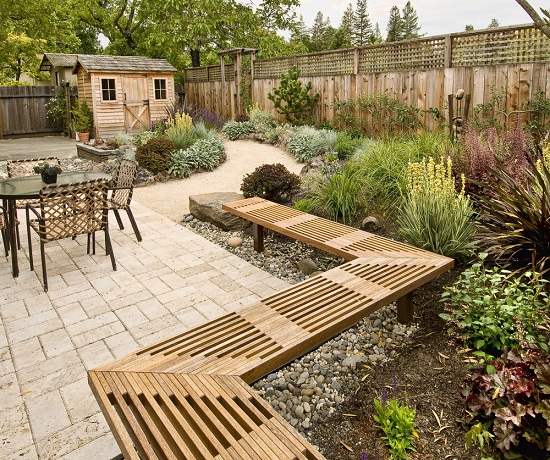
Snowy areas gardeners have many reasons to be cold about winter. Plants are at rest, and bright colors fade. This leaves a palette of gray and white. They might also think that there are no winter landscaping tips or tricks, as they have nothing to plant. It is possible to create a stunning landscape against the stark contrast of winter by carefully planning for spring, summer and fall. Barbara Pierson, White Flower Farm’s nursery manager in Litchfield, Connecticut, says that if you want winter interest in your garden you should only be looking at a handful of things.
These are six winter landscaping tips from Pierson to help you love your yard every season.
1. Keep your eyes on the bark. Yes, deciduous trees can lose their leaves during winter, but that doesn’t mean they shouldn’t be focused on their bark. Pierson says that this can be a good thing if ornamental trees with visually distinct bark are available. This will add winter interest.
Some of these trees and shrubs are smaller than others, which makes it easier to locate them in winter landscaping Charleston SC. Pierson loves birch and dogwood trees for their texture and color.
2. Include berries. There are many trees and shrubs that have berries that they keep on the fall and winter. These can be food for birds who overwinter in your area. Pierson states that crabapples are a wonderful addition to winter landscapes. She says that a holly with berries looks really lovely.
3. Remember evergreens. For many reasons, evergreens are great for winter lawn care. The first is color. Evergreens come in a variety of colors, including yellows like Gold Thread false Cypress and blues such as dwarf blue spruce and many others. Pierson states that evergreens are a good choice for design. She says that while they are essential for winter landscapes, they also make great focal points throughout the year. “I like at least one to two evergreens, and a border around them. You should always have at least one tree when you plant a new bed.
4. Rely on your hardscape. Winter is a great time to evaluate your landscape, yard maintenance, and identify its missing focal points. Your best option for improving your winter landscaping is not a plant. Pierson states that winter is the best time for hardscape. A trellis is a bench, a bench, and an arbor are all essential.
5. Adorn your summertime containers. Winter-hardy containers, window boxes, hanging baskets: They all are outdoor decorating essentials for winter landscaping. The miniature dwarf Alberta spruce, broadleaf evergreens such as Japanese Andromeda and holly, are ideal for winter landscaping. However, they must be watered in dry periods. Pierson suggests that you don’t need to spend a lot of money on plants. Pierson suggests that you fill containers with evergreen boughs in a variety of textures and colors, and with interesting twigs.
6. Choose four-season perennials. Pierson states that some perennials have evergreen leaves, such as ornamental grasses, hellebores and even dianthus, which makes them ideal for winter landscaping. She advises that you read the label to find out if the plant is covered in winter foliage so you can observe it all year.
Pierson states that winter is a great time for non-plant items to stock up for next year’s garden. She says, “It’s an excellent time to bargain-shop on anything for the garden.” Use a tape measure to research plants and determine the seeds you will need. Keep track of what worked and what didn’t in the current year.
Call Porter Hayes Landscaping LLC if you need professional help in taking care of your lawn and landscape.
Porter Hayes Landscaping LLC
Charleston, SC 29419
(843) 532-3270
http://www.porterhayeslandscaping.com/
No comments:
Post a Comment